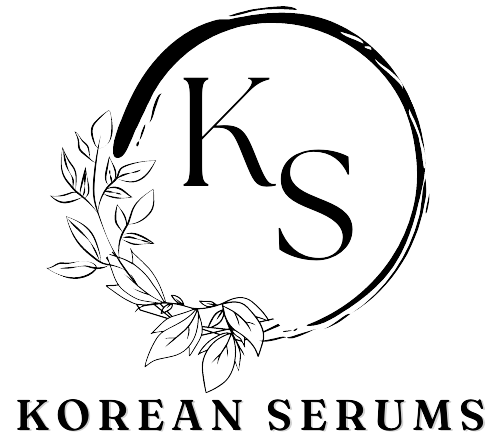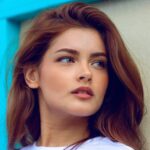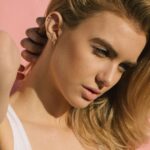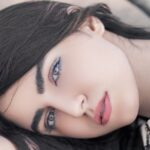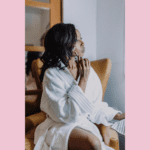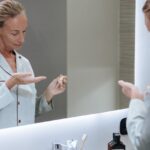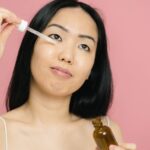Below we have Korean beauty standards tests, but Korean tests are at a different level. What do you consider to be the Korean standard for beauty? Korean makeup and beauty are taking huge leaps in this field, and we’re wondering if we’re attractive according to Korean makeup experts and professionals in the industry. You’ve probably heard of certain models sporting fair skin, so fair, it looks like glass, with sharp jawlines and eyes that are big for dolls.
Below are a few Korean beauty guidelines for females that you could be interested in achieving the perfect Korean beauty look.
What Are The Beauty Standards In Korea?
The first standard is an unassuming face. It may not be attractive in Western society, but it’s popular in Asian countries, particularly South Korea. Some theories say this is because Asians have small eyes, making their faces appear larger.
Korean beauty standards tests
We then conducted follow-up binomial studies to determine if the proportions of white-leaning or Asian-leaning features of Asians were significantly different. We determined the null test percentage at .50 to represent an equally distributed proportion across all facial characteristics with p-values calculated based on a two-sided study.
V-shaped Face
Following Korean beauty standards test, have the face in a V shape. It’s part of having a smaller face, but Korean beauty standards demand an oval-shaped face. A face with no jawline definition and a pointed cheek. Having a smaller face is considered attractive in South Korea. There are many facial bone contouring procedures you can go through to improve and smooth the shape of your face.
Koreans have also developed jawline sheet masks, massage roles, and other cosmetics. South Korea is one of the largest markets for cosmetics around the globe, so it’s no surprise that they’ve all kinds of products.
Porcelain White Skin or Pale Skin
The most renowned Korean beauty standard is to have flawless, pale skin. If Western beauty standards prefer bronzed or tan skin, South Koreans prefer white, porcelain-coloured skin tones. The standard has been in place since the early Korean time. The standard is deeply embedded in Asian civilizations, too.
The Korean beauty norm was established in the royal era, in which flawless white skin symbolized class identity. In earlier times, Koreans with dark skin colour were considered to be people working in agriculture or other hard work-related jobs.
Pointed Nose
A small, pointy nose is another feature to consider that Korean beauty standards demand. Various procedures or surgeries can be performed to achieve this, including Rhinoplasty or nose surgery. Incredibly, having a huge nose was considered a desirable feature in the past, but not anymore. The small nose is akin to having a small face.
Big Eyes
South Koreans have a youthful and innocent style. The key to achieving the look is having big eyes. The look is also known by the term “doe eye. Koreans typically undergo surgery to get this look. Also, to the double-eyelid procedure, another well-known procedure, is the injection of filler or fat under the eyes. Ultimately, it’ll appear like the natural fat pocket we see in smiles.
Double Eyelids
The most well-known Korean cosmetic standard everyone Korean person is aware of is having double eyelids. Most Koreans were born with monoids, so to achieve these Korean beauty standards, they undergo “double eyelid surgery.” There’s a surgery called East Asian blepharoplasty (double eyelid surgery), which It is a procedure aimed at creating a crease on the upper eyelids.
Straight Eyebrows
Westerners have this “eyebrows on fleek” look, which people are drawn to. But, according to Korean fashion, having a straight, well-defined eyebrow is desirable. This is another method to maintain a youthful and innocent appearance.
Plump Lips
In the past, thin lips were the Korean biological standard of beauty, but nowadays, full lips or heart-shaped lips like Ibsul that inspire hatred are considered attractive. Lower lips should appear plumper than the upper. It is even more complicated because the lip line needs to look upwards when you smile.
Aligned Teeth
Being able to align your teeth is a more Korean beauty norm that Koreans adhere to. This is why the majority of Koreans had braces as children. Wearing braces once you’re old isn’t a popular choice in Korea. For a youthful and innocent appearance, aligning your teeth is ideal, especially when you smile.
Slim Figure
Contrary to the curvy bodies of Western beauty norms, South Koreans prefer slim bodies. It is rare to see Korean stars and idols sporting curvaceous bodies. Also, Korean males keep slim figures to adhere to male beauty standards. A fun fact South Korea is one of the nations with the lowest rates of obesity despite enough great foods available.
Many South Koreans, especially celebrities and idols, follow an extremely strict diet to keep their slim physique. Many admire K-pop celebrities for their amazing physiques, but behind their stunning figure are strict eating habits and guidelines which make them fight. This is familiar to this part of the Korean business of music.
Long Legs
Besides the slim face and body, having long legs is popular in South Korea. The length of your legs should be greater than your body’s length. There is a thing known as the “8-headed body figure”. This signifies that the length of your face multiplied by eight should equal the total body size.
Do I fit Korean beauty standards?
Her face is beautiful and ethereal, but she isn’t as beautiful as the facial features seen in Jisoo and Jennie. Rose, on the other side, is the most sought-after part of the Korean beauty standards regarding her face.
Is the trend of Skip-Care shaping up to become the next trend in global beauty?
Many women from South Korea are adopting the Skip-Care method, in which the traditional multi-step routine for skincare is replaced with a simple, less cluttered routine. ” Skip-Care is a rising pattern among who like to in Korea.It is essentially a resistance to the complex routines of beauty, which are common within K-Beauty.”
But according to, Yoon insists on emphasizing that while Skip-Care is a reflection of the growing desire of women to break away from a strict and time-consuming beauty routine, it’s not carrying the same message as Escape the Corset, especially because the movement has largely been influenced by brands looking to create commercialization of the trend. “Escape Corsets” is more an expression of displeasure against patriarchal pressures.
Skip-Care is a shorter version of a routine for skincare. In Korea, skincare remains a crucial aspect of self-care and well-being, and you are not likely to hear women say that they do not want to look after their skin due to wanting to fight patriarchy. Some will quit wearing makeup to avoid this.”
